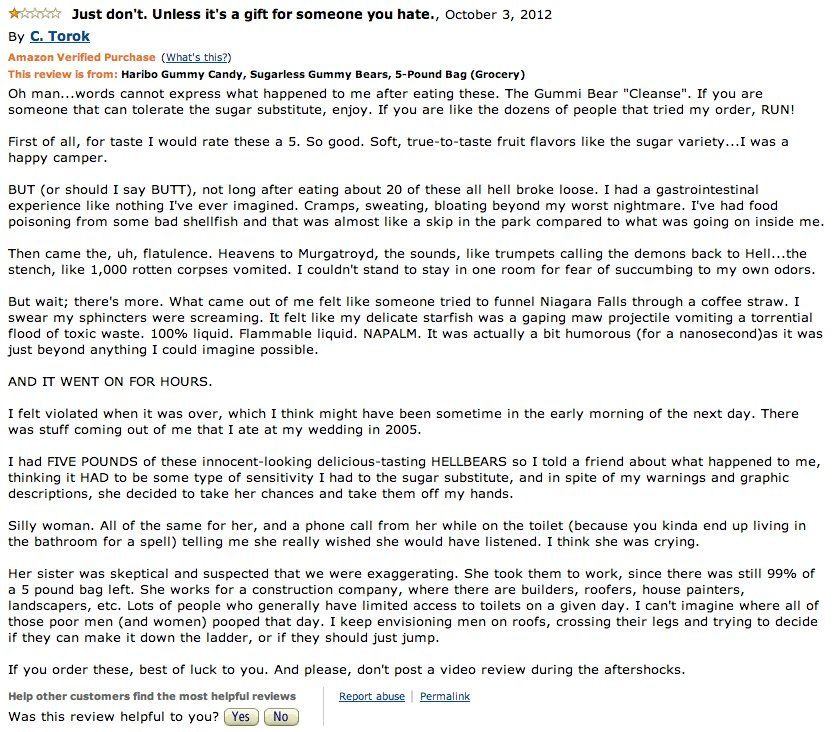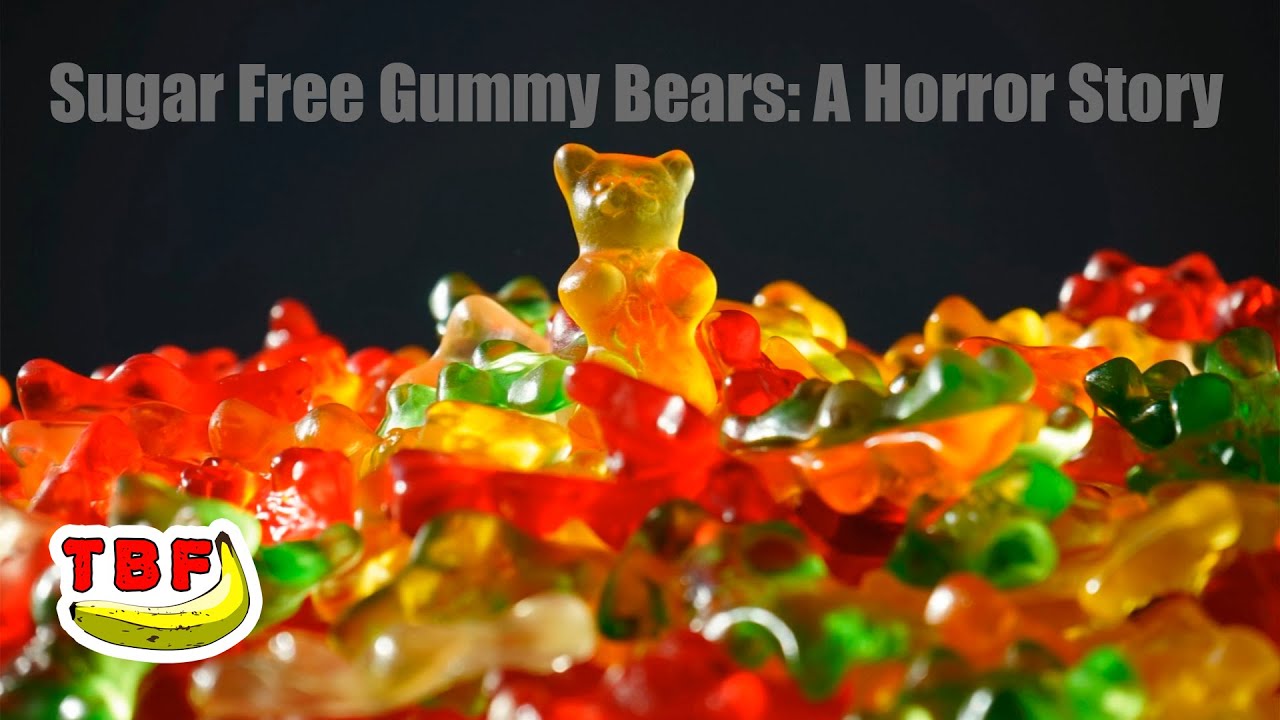In recent years, the internet has been peppered with amusing and sometimes horrifying stories revolving around one particular confection: Haribo Sugar-Free Gummy Bears. These little gelatinous delights have gained notoriety not just for their taste but for the disastrous—and downright hilarious—experiences that some consumers have had after indulging in them. The phenomenon of online reviews has taken these gummy bears into a world of viral fame, showcasing the intersection of humor, caution, and the unpredictability of culinary adventures. In this article, we will explore the amusing world of gummy bear reviews, dissect the ingredients that lead to such comedic catastrophes, and discuss the health implications surrounding this sugar-free snack.

hilarious gummy bear amazon review
Why Are Gummy Bears So Popular?
Gummy bears have been a beloved candy for decades. Their chewy texture and fruity flavors enchant children and adults alike. However, the allure of sugar-free alternatives, like those offered by Haribo, captures the attention of health-conscious consumers seeking a sweet treat without the calories. But, as many have discovered, indulging in these sugar-free gummy bears can turn from a delightful treat to a harrowing experience.

hilarious gummy bear amazon review
From Delight to Distress: The Gummy Bear Reviews
The hilarity of gummy bear reviews stems from users who have documented their wild experiences, often with colorful language and vivid imagery. A classic example comes from a review titled “See you in hell, Haribo Sugar-Free Gummi Bears,” where the reviewer paints a graphic picture of the aftermath of consuming these bears: “The damned, liquified souls of an entire bag’s worth of gummi bears cried as they burned through my sphincter and into the watery abyss below.” This particular review highlights the unfortunate gastrointestinal distress many have encountered, attributing it to the sugar substitute, maltitol, which the body may struggle to fully digest.
The Ingredients Behind the Humor
Many caramels, chocolates, and chewing gums have embraced sugar alcohols, which can deliver sweetness without the same caloric impact. In sugar-free gummy bears, maltitol is the main sweetener, boasting a sweetness level similar to sugar but with about half the calories. Unfortunately, as nutritionist Dr. Sarah E. Dwyer explains, “For some individuals, especially those with sensitive digestive systems, sugar alcohols like maltitol can lead to bloating, cramping, and an urgent need for the restroom.” While the appeal of low-calorie options is strong, consumers must tread carefully when indulging. The reviews serve as a comedic warning: “Eating these bears is like demanding a one-way ticket to the bathroom,” notes culinary critic and humorist Ted Allen.
The Ripple Effect of Viral Reviews
The consequences of these reviews on the product’s reputation extend far beyond humor. They have given rise to memes, forums, and countless blogs dedicated solely to the large array of reactions from consumers who dared to try these treats. Renowned personality Neil deGrasse Tyson once quipped, “Science is about questioning what we know; sometimes that leads to surprisingly messy results—literally.” This playfulness resonates with readers, affirming that laughter can be found even in life’s most uncomfortable moments.
Health, Self-Love, and Moderation: A Sweet Balance
Amid the giggles, the sugar-free gummy bear debacle highlights significant discussions around health, self-love, and balance. It’s easy to forget that while these treats might save calories, moderation is key. Clinical psychologist Dr. Vivian H. Krug emphasizes, “Food should be enjoyable and not serve only as a vehicle for caloric management. When we demonize certain foods, we can create unhealthy relationships with eating.”
Lessons Learned: When Junk Food Goes Wrong
This merry-go-round of candy folly underlines a crucial life lesson about moderation. Just because a treat is labeled as “sugar-free” does not mean it is free from potential repercussions. Life coach Marie Forleo advocates for balance over restriction, stating, “Love your body and fuel it well, but don’t be afraid to embrace some whimsy in your diet.” The sugar-free gummy bear saga serves as a comedic example of what happens when whimsy goes awry!
Conclusion: A Candy-Coated Cautionary Tale
The saga of Haribo Sugar-Free Gummy Bears stands as a tribute to the ways humor is interwoven with our daily experiences, especially in the realm of food. Amidst the giggles and shocking reviews, we can learn about the importance of ingredients, moderation, and maintaining a healthy relationship with food. Laughter, as they say, is the best medicine—unless you’ve just devoured a handful of these notorious gummy bears!
Frequently Asked Questions (FAQs)
Why do bodybuilders love gummy bears?
Bodybuilders often consume gummy bears for their high carbohydrate content, which can be rapidly absorbed, providing quick energy post-workout. The sugar in gummy bears also helps replenish glycogen stores effectively.
What are Haribo sugar-free gummy bears made of?
The main ingredient in Haribo’s sugar-free option is lycasin, a sugar alcohol that offers sweetness similar to regular sugar but with fewer calories. Maltitol, another common sugar alcohol, is also present.
What flavor are green Haribo gummy bears in the UK?
In the UK, the green Haribo gummy bears are flavored with strawberry, contrary to common misconceptions that they might be mint or apple.
What flavor is the clear Haribo gummy bear?
The clear gummy bear is typically flavored with pineapple, providing a sweet tropical note among the assorted flavors.